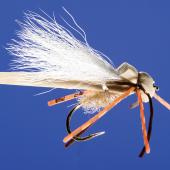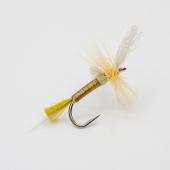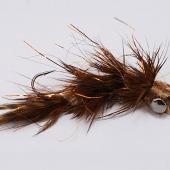Ant Farm
Tying a terrestrial fly pattern.
The cinnamon bionic ant has been a mid-summer staple for the past couple years in Montana. When the days are long and smoke fills the air, trout in our area key in on terrestrial insects that flop in from the riverbanks. Lots of anglers and guides will opt for a hopper, but an ant can be a good way to trick wary trout that have already seen a lot of larger foam patterns. This fly can be fished with a smaller dry fly behind it, a bigger dry fly in front of it, or with a small dropper nymph underneath. Try it on your favorite small alpine creek, big tailwater, or freestone river.
Materials
Hook: Ahrex FW501 #14
Thread: 8/0 Veevus, tan
Body: 1/8” foam cylinder, cinnamon
Wing: EP Trigger Point, dark dun
Legs: Barred Sexi-Floss, copper-brown
Hackle: Dark-barred ginger
Instructions
1. Start the thread behind the eye of the hook and wrap back to the bend.
2. Cut the foam cylinder in half, and use pinch wraps to secure it to the hook. Cover the whole hook shank and foam with binding thread wraps, leaving about half a hook shank’s worth of foam sticking off both the front and back of the shank (see photo).
3. Secure a small amount of EP fibers to the top of the hook shank, wrapping rearward to where the foam body begins.
4. Cut a piece of Sexi-Floss in half, creating two legs. Attach one to either side of the body so they splay in an “X” pattern.
5. Measure a piece of hackle to match your hook size, and attach it to the top of the hook shank so it hangs off the back. Wrap the hackle forward 4-6 times using touching wraps. Tie off behind the foam head.
6. Secure the thread with a 4-5 turn whip finish. Cut the thread and apply a small drop of head cement.
Drew Daniels is a sales associate at Bozeman Fly Supply.












